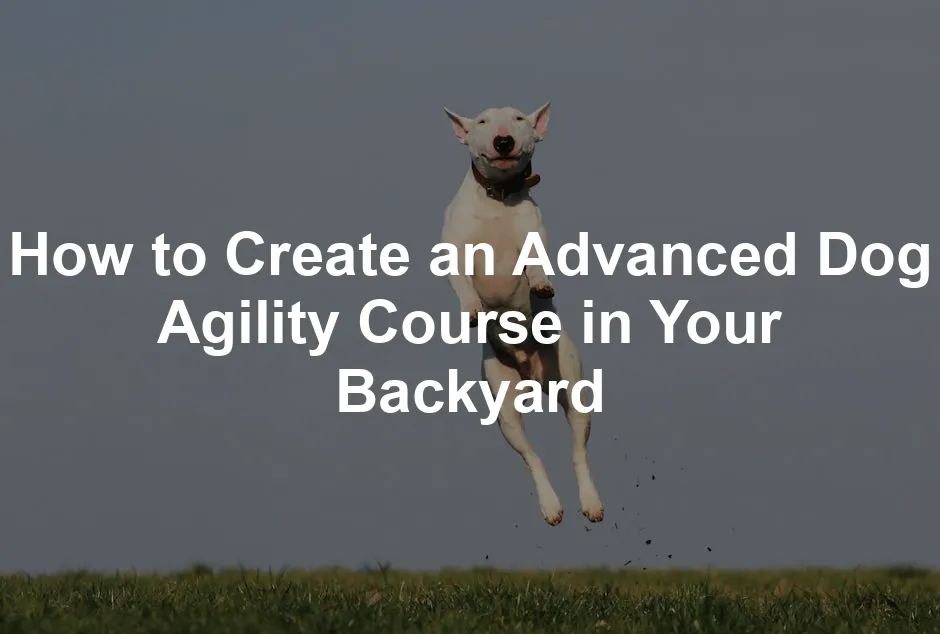Introduction
Dog agility is an exciting sport that’s gaining popularity. It involves dogs navigating through a series of obstacles, such as jumps, tunnels, and weave poles. Agility training offers numerous benefits for your furry friend, from physical exercise to mental stimulation. Creating a DIY agility course at home allows you to bond with your dog while keeping them active and engaged. This guide will walk you through everything you need to design and build an advanced agility course in your backyard.
To get started, you’ll need some essential equipment. Don’t forget to check out this Dog Agility Equipment Set that provides everything you need to kick off your agility training journey!

Summary and Overview
In this guide, you’ll learn how to create an advanced dog agility course. We’ll cover crucial steps, such as planning your layout, ensuring safety, and selecting the right materials. You’ll also discover helpful training tips and explore the potential for competition. By the end, you’ll feel equipped to set up a fun and challenging agility course for your dog, making your backyard an adventure zone.
Planning Your Dog Agility Course
Assessing Your Space
Before building your agility course, evaluate your backyard space. Start by measuring the area to determine how much room you have for obstacles. Consider the size of your dog and the types of obstacles you want to include. Ensure there’s enough space between each obstacle to allow your dog to navigate easily. A sketch or layout of the course can help visualize the arrangement. This planning stage is vital for creating a safe and enjoyable course for your pup.
Designing the Layout
A well-thought-out course layout is crucial for success. Balance difficulty and safety when choosing obstacles. Incorporate a variety of challenges, such as jumps, tunnels, and weave poles, to keep your dog engaged. Use visual markers, like cones or flags, to guide your dog through the course. This helps them understand where to go next and keeps them focused. An exciting layout will not only enhance their skills but also make training sessions more enjoyable for both of you.
To help you visualize the layout, consider using this Dog Agility Course Layout Blueprint that provides a variety of designs to inspire your agility course planning!
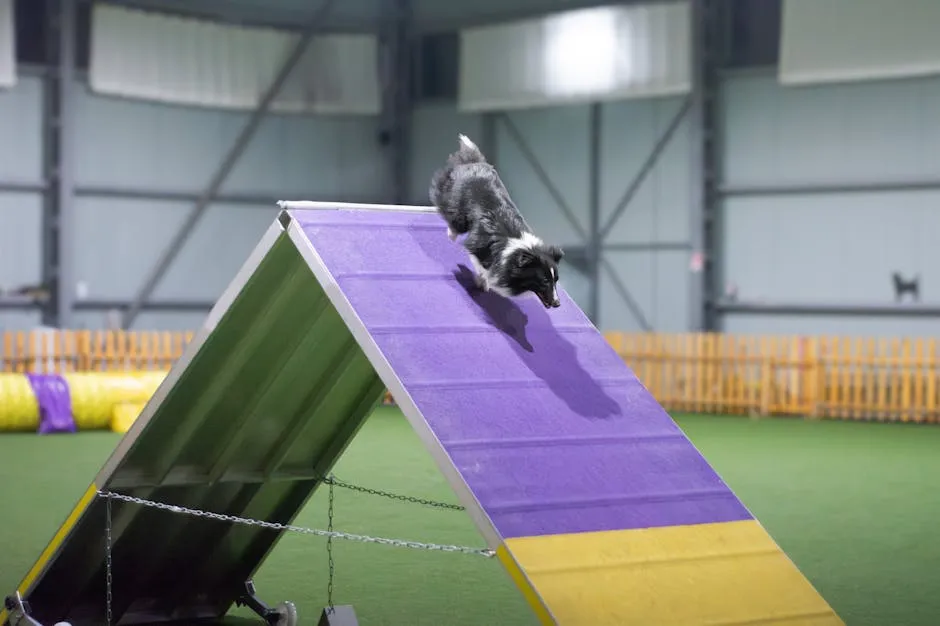
Materials and Equipment Needed
Choosing the Right Materials
Creating a dog agility course starts with the right materials. Common options include PVC pipes and wood. PVC is lightweight, flexible, and easy to work with, making it ideal for jumps and weave poles. Wood offers sturdiness, perfect for more permanent structures like A-frames or teeter-totters.
For cost-effective options, consider using recycled items. Old tires, hula hoops, and even garden stakes can serve as great agility equipment. Just ensure any materials you choose are non-toxic and durable. Safety is key, so avoid sharp edges or splintered wood. Always inspect your materials before use to keep your pup safe.

Recommended Equipment for Advanced Courses
An advanced agility course features a variety of equipment to challenge your dog. First, adjustable jumps are essential. They allow you to customize the height based on your dog’s skill level. You can easily make them using PVC pipes or purchase pre-made options like this Adjustable Dog Agility Jump.
Next, tunnels add excitement and encourage speed. Look for collapsible fabric tunnels or sturdy plastic ones. Install them securely to prevent movement during use. Weave poles are another must-have. Set up six to twelve poles spaced about two feet apart for your dog to navigate. You can find great options for this in kits like the Weave Poles for Dog Agility Training.
Teeter-totters help improve balance and coordination. Build a sturdy structure that tips gently to avoid injury. Lastly, A-frames provide a great climbing challenge. Ensure they are stable and have a non-slip surface for safety. Each piece of equipment enhances your dog’s agility training and keeps sessions fun and engaging.
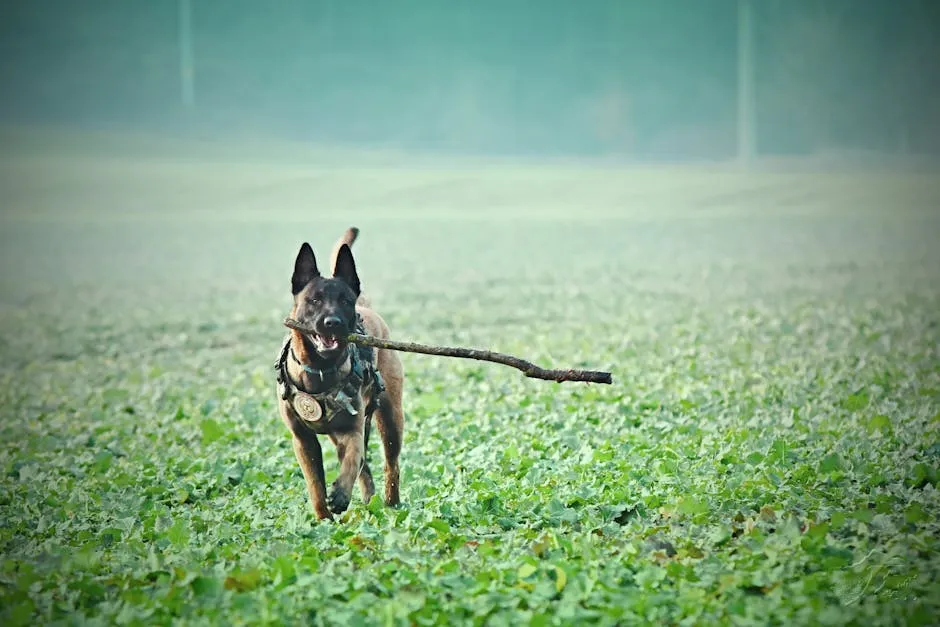
For detailed guidance on setting up your course, check out this link on how to build a backyard agility course for dogs.
Building Your DIY Agility Equipment
Step-by-Step Instructions for Key Obstacles
Building agility obstacles can be straightforward and enjoyable. Start with jumps. For a basic jump, cut PVC pipes to desired lengths. Use T-joints for stability, creating a frame that can easily be adjusted. Secure a lightweight bar on top, ensuring it falls if knocked down.
Next, weave poles can be made using PVC or wooden dowels. Space them about two feet apart, anchoring them in the ground or using buckets for stability. For a tunnel, consider a child’s play tunnel or make one from fabric. Secure it with ground stakes to keep it in place.
Constructing a teeter-totter involves a plank and a sturdy base. Use a low fulcrum to allow your dog to confidently cross. Lastly, for an A-frame, use plywood cut into two triangular shapes, ensuring it’s stable. Sand any rough edges to prevent injuries. Remember to customize the height and difficulty based on your dog’s size and skill level, gradually increasing challenges as they improve. Always prioritize safety during construction and while your dog practices.
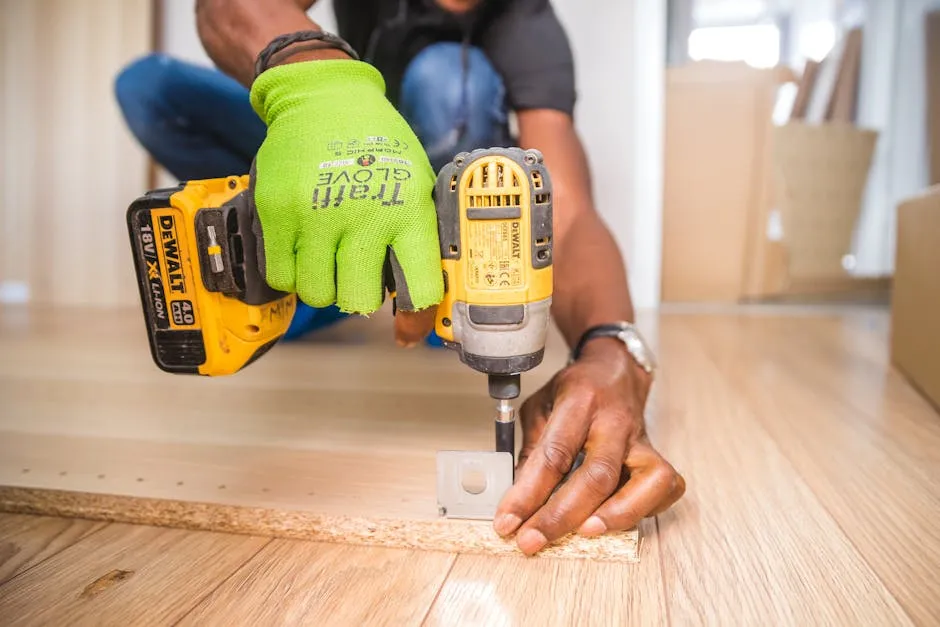
Creative DIY Ideas
Creating a dog agility course can be a fun project. Using recycled materials not only saves money but also sparks creativity. Consider using old tires as jumps. They can be stacked safely to create varying heights. Hula hoops are another fantastic option. You can hang them from sturdy supports for your dog to jump through. Check out this Hula Hoop for Dog Training to get your dog jumping in style!
Integrating natural elements into your course adds an organic touch. Logs can serve as balance beams. Arrange them in a safe, stable manner. Shrubs can act as natural barriers, guiding your dog through the course without the need for artificial obstacles.
Custom designs can focus on developing specific skills. For example, create a zig-zag path using cones or markers to challenge your dog’s agility and turning ability. You could also build a mini “A-frame” using wood or sturdy plastic. This will help improve your dog’s climbing and coordination skills.
Don’t forget to make the course visually appealing. Painting obstacles in bright colors can motivate your dog and make training more exciting. As you experiment with different designs, remember to adjust the course based on your dog’s skill level. With a mix of creativity and practicality, your backyard can become a thrilling agility playground!
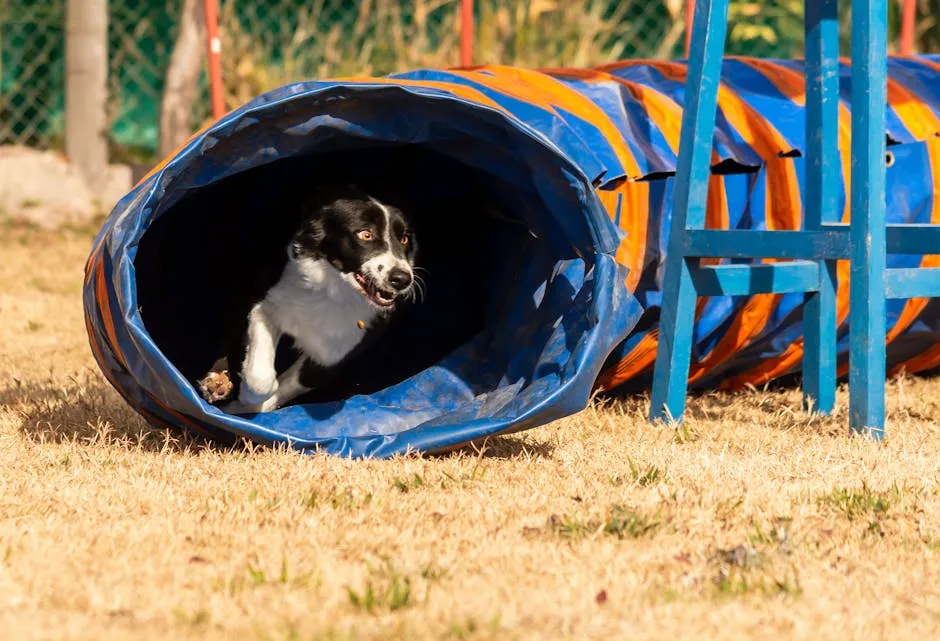
Training Your Dog on the Agility Course
Introducing Your Dog to the Course
When introducing your dog to the agility course, start slowly. Use positive reinforcement to make the experience enjoyable. Treats are excellent motivators, so keep them handy. Begin with simple obstacles, like low jumps or tunnels. Don’t forget to grab some Dog Training Treats to keep your pup motivated during training!
Encourage your dog to engage with each obstacle. If they seem hesitant, guide them with treats or toys. Celebrate their successes with praise and rewards. This helps build their confidence and eagerness to participate.
Gradually increase the complexity of tasks as your dog becomes comfortable. Once they master a simple jump, introduce a second one. Maintain patience; every dog learns at a different pace.
Always monitor your dog’s mood. If they seem tired or frustrated, take a break. End each session on a positive note. This could be a fun game or extra treats.
Your dog will associate the agility course with joy and play. With time and practice, they’ll thrive in their agility training.

Advanced Training Techniques
Once your dog is comfortable with the agility course, it’s time to step up training. Focus on improving speed and accuracy. Use a stopwatch to time their runs. This adds a fun challenge and encourages your dog to improve.
Handling techniques are crucial. Use clear verbal cues to guide your dog through the course. Body language can also communicate your expectations. For example, a point or gesture can indicate which direction to go.
Introduce distractions during practice sessions. This could be noise from a nearby road or toys nearby. Training in various environments helps your dog learn to focus amidst distractions.
Additionally, vary the course layout to keep things fresh. Changing obstacles or their order can keep your dog engaged and eager to learn. Incorporate new elements, like a different type of jump or a tunnel, to challenge their skills further.
With dedication and fun, your dog can excel in agility training, building both confidence and skill.

Competitions and Socialization
Hosting Your Own Agility Events
Creating a fun and competitive atmosphere at home can be easy. Start by organizing friendly competitions with neighbors or friends. Invite fellow dog owners to join the fun. This not only strengthens your community but also makes for a delightful day.
Set up a basic course layout. Use jumps, tunnels, and weave poles for variety. Keeping score can add excitement. You might award fun prizes to the top finishers. This playful competition encourages all participants to improve their skills.
Make sure the environment feels supportive. Cheer for everyone, regardless of their performance. A positive experience helps both dogs and owners feel confident. Celebrate each dog’s achievements, big or small. By fostering this atmosphere, you’ll create lasting memories and strong bonds.

Exploring Local Agility Clubs
Exploring local agility clubs can greatly enhance your experience. Joining a community opens doors to new friendships and training opportunities. These clubs often host events that allow you to practice in a competitive setting.
Finding clubs or competitions is easier than you think. A quick online search can yield options in your area. Many clubs welcome all skill levels, so don’t hesitate to inquire. You might also discover workshops or training sessions hosted by experienced trainers.
Networking with other dog owners is another fantastic benefit. Sharing experiences and tips can help you grow as a handler. Learning from others can inspire new training ideas for you and your dog. Plus, it’s a wonderful way to meet fellow dog lovers who share your passion for agility.
Conclusion
Creating an advanced dog agility course in your backyard offers numerous benefits. It provides physical and mental stimulation for your dog while strengthening your bond. Plus, it’s a great way to have fun together.
Don’t hesitate to start your project. Enjoy the process and watch your dog thrive. Remember, agility training is an ongoing journey. You’ll continuously learn and improve along the way, enhancing both your skills and your dog’s abilities. So grab those materials and get going!
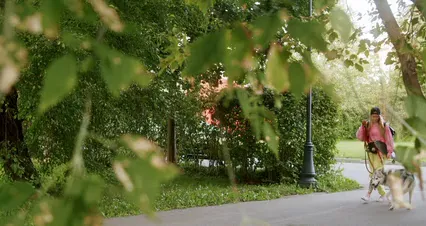
FAQs
What is dog agility and how can it benefit my dog?
Dog agility is a sport where dogs navigate a series of obstacles. It involves jumps, tunnels, weave poles, and more. The benefits of dog agility are numerous. It offers physical exercise, improving your dog’s fitness. It also enhances mental stimulation, keeping them sharp. Additionally, agility training boosts your dog’s confidence and obedience. You’ll both enjoy the bonding experience, making it a fun activity for you and your furry friend.
Can any dog participate in agility training?
Yes, most dogs can participate in agility training! Breeds of all sizes can excel in agility. However, some breeds naturally perform better due to their energy levels and agility. For instance, Border Collies and Australian Shepherds often shine in this sport. Age also plays a role. Puppies should wait until they are at least 12 months old to avoid injury. Always consider your dog’s health and consult with a vet before starting.
How much space do I need for an agility course?
The space needed depends on the number of obstacles you plan to set up. A minimum of 30 feet by 30 feet can work for a basic course. If you have a smaller yard, focus on fewer obstacles, like jumps and tunnels. Creating a compact layout can still offer plenty of fun! Just ensure there’s enough room for your dog to run safely between obstacles.
What materials can I use to build a DIY agility course?
You can use various materials to create a DIY agility course. PVC pipes are popular for jumps and weave poles due to their lightweight nature. Wood is great for sturdier structures like A-frames. Recycled items are also fantastic! Old tires, hula hoops, and even cardboard boxes can serve as obstacles. Choose materials that are safe and non-toxic. This way, you can stick to your budget while keeping your dog safe.
How can I ensure my dog’s safety while training?
Safety is essential during agility training. Always supervise your dog while they practice. Inspect all equipment for sharp edges or loose parts before use. When starting out, introduce obstacles gradually, allowing your dog to adjust. Use positive reinforcement to encourage them, making the experience enjoyable. If your dog shows signs of fatigue, take a break. Keeping training sessions short can help avoid overexertion.
Are there competitions for backyard agility courses?
Yes, there are local competitions for backyard agility courses! Many areas host fun matches or informal competitions. Search for local agility clubs or events in your community. You can also join online forums to connect with other agility enthusiasts. This way, you can learn about upcoming competitions and find opportunities for your dog to showcase their skills!
How long will it take to train my dog to complete the course?
Training time varies based on your dog’s age, experience, and temperament. Some dogs may learn quickly, mastering obstacles in a few weeks. Others might take several months to gain confidence. Consistent practice is key. Keep training sessions positive and fun, gradually increasing difficulty. Regular repetition will help your dog improve, turning agility training into a rewarding experience for both of you.
As you embark on this exciting journey, consider investing in a Dog Agility Training DVD for visual guidance and tips that can enhance your training sessions!
Please let us know what you think about our content by leaving a comment down below!
Thank you for reading till here 🙂
All images from Pexels

